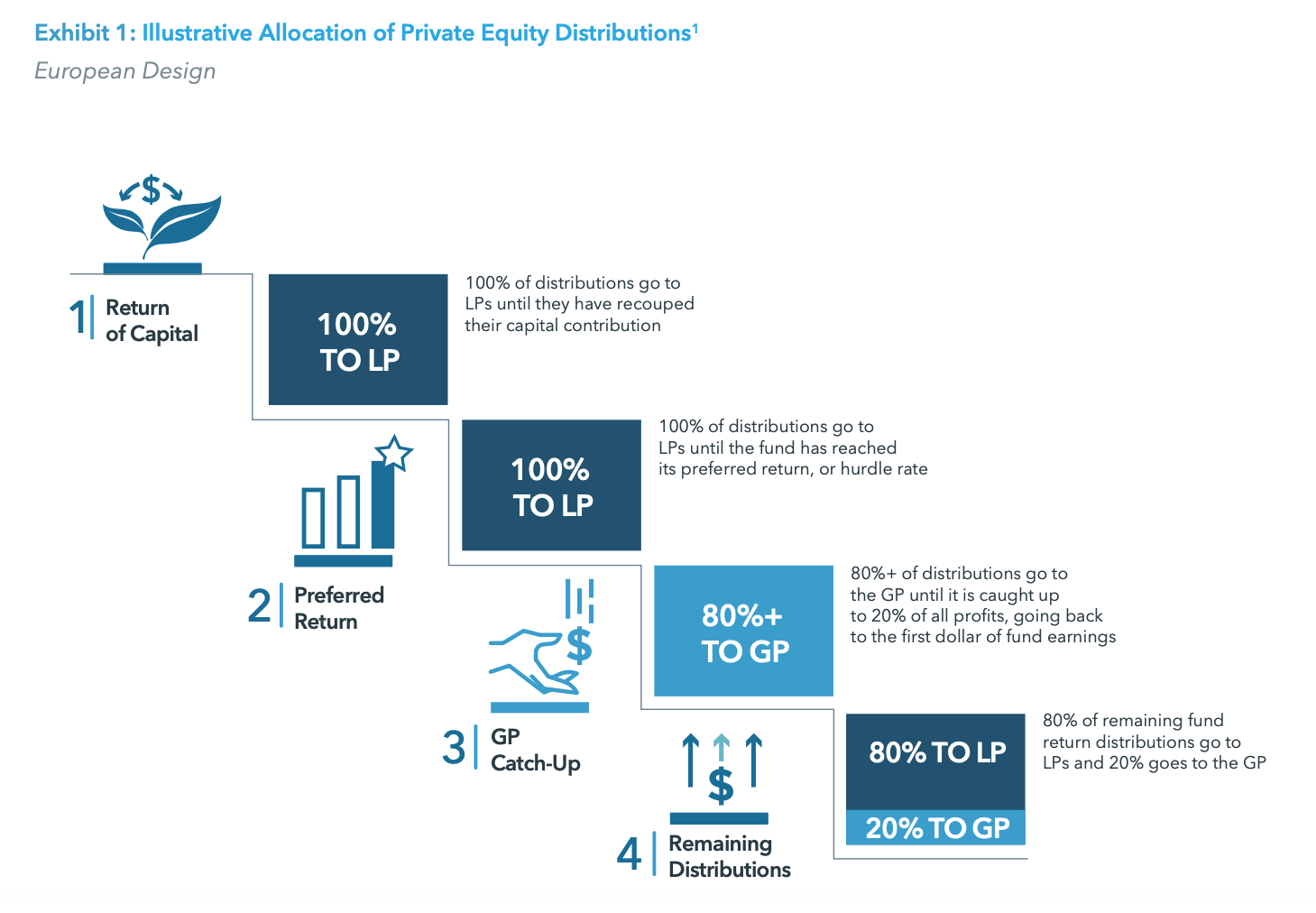Written by: Kunal Shah
One of the more compelling value propositions of the private markets industry is the strong alignment of interests between general partners (GPs) who manage funds and limited partners (LPs) who invest. A key driver of this alignment is carried interest, or the performance-based incentive fee that GPs collect, which typically represents 10–20% of profits generated by a fund after a preferred return is achieved. Unlike other asset classes, where managers may only collect fees as a percentage of assets under management, private market fund managers have an added incentive to deliver strong performance, rather than simply gather assets.
Most private market funds set their hurdle rate or preferred return at around 8%, though this may vary depending on the fund’s strategy. This means the fund manager must generate an annualized net return of at least 8% for investors before the manager can share in any of the fund’s profits. The preferred return is a critical tool to ensure that managers achieve a prespecified baseline return for investors before they can collect incentive compensation.
However, it is important for investors to properly assess a private market fund’s waterfall (the allocation of distributions between the GP and LPs) in order to ensure proper alignment of interests. There are four primary components to one of the most common forms of distribution waterfalls; the European waterfall.
1. RETURN OF CAPITAL
100% of a fund’s proceeds are distributed to investors until they have received an amount equal to the total amount they have invested.
2. PREFERRED RETURN
Investors continue to receive 100% of fund proceeds until the fund has achieved its preferred return, or hurdle rate, as defined in the fund’s offering documents. While the typical preferred return in private equity is 8%, it is often 6–7% in the case of private credit funds, which usually have lower target returns than buyout funds. Note that venture capital funds do not typically offer a preferred return.
3. GP CATCH-UP
Once a fund has returned all contributions to investors and reached its preferred return, the GP is then able to begin collecting carried interest, which is calculated by going back to the first dollar of profits generated by the fund. In order to recoup the GP’s share of returns accrued prior to reaching the hurdle rate, most funds have a GP catch- up provision, which allows a manager to retain a higher proportional amount of a fund’s profits (ranging from 50–100%) until it has caught up to the profit percentage to which it is entitled (generally ranging from 10–20%). For example, once the fund reaches its hurdle rate, 50–100% of the next distributions will be allocated to the GP until its return equals the prespecified share of profits.
4. REMAINING DISTRIBUTIONS
After the manager is caught up and has received its prespecified share of profits for fund distributions made to investors, all remaining proceeds are then allocated between LPs and the GP at the specified rate (typically ranging from 80–90% to LPs and 10–20% to the GP, depending on the terms of the fund).
A well-designed waterfall can be a benefit for LPs, as it creates strong alignment and properly incentivizes the manager to optimize returns.
While these four components are relatively standard across most private market funds, there are variations on how a GP may implement its waterfall. The most common variations are the European waterfall and the American waterfall. The designation of European vs. American refers to the way that the waterfall is structured, not the geographical location of the manager. Under a European waterfall structure (previously described), carried interest is calculated at the fund level across all deals. In this scenario, the GP does not begin to take carried interest until the fund has returned all LP contributions across all deals and delivered the preferred return.

By contrast, an American waterfall is calculated on a deal-by-deal basis, and a GP is compensated for each successful deal. This often allows the GP to begin taking a share of the profits, or carried interest, earlier in the life of a fund. In some cases, this can alter a GP’s behavior, as collecting carried interest on a few large, successful deals early on may reduce their incentive to optimize performance later in a fund’s life. An American waterfall also can result in a GP receiving carried interest on a fund that is underperforming its hurdle rate, provided that there are individual deals that have outperformed the preferred return. Almost all funds that utilize an American waterfall include a clawback provision, which require GPs to hold a portion of carried interest collected over the life of the fund in escrow to account for scenarios under which the overall performance of the fully liquidated fund dips below the hurdle rate. This allows for the recovery of any excess carried interest that the GP may have retained to ensure that LPs receive their net hurdle rate. European waterfalls are generally more favorable for investors because they delay the payment of carried interest and prevent GPs from collecting incentive compensation on funds that underperform.
EUROPEAN WATERFALL: Performance is measured versus the hurdle rate at the fund level.
AMERICAN WATERFALL: Performance is measured versus the hurdle rate on a deal-by-deal basis.
Due to the somewhat complex nature of waterfalls, investors should carefully examine a fund’s terms to understand how carried interest is paid.
It is important that the waterfall structure is designed to appropriately balance the needs of both the investor and the manager to maximize the alignment of interests between all parties involved. A well-designed waterfall can be a benefit for LPs, as it creates strong alignment and properly incentivizes the manager to optimize returns. When a fund is performing well, fund managers reap the benefits along with their investors.


